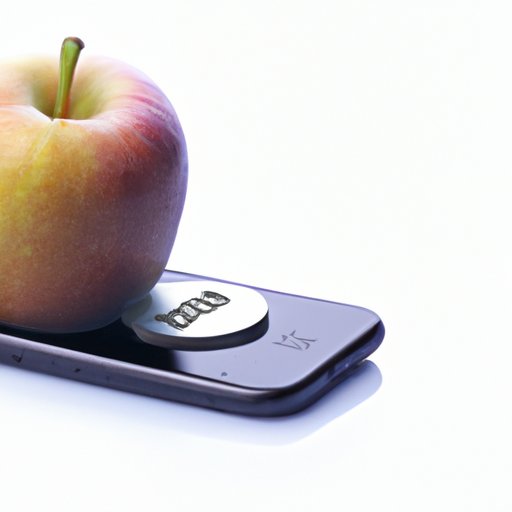
Introduction to Apple Pay
Apple Pay is a mobile payment method developed by Apple Inc. that allows users to make secure transactions both in stores and online using their iPhone, iPad, or Apple Watch. With Apple Pay, users can easily add their credit or debit cards to their devices and use them to make fast and convenient payments with just a tap of a button. In this article, we’ll provide a comprehensive guide on how to get Apple Pay, including step-by-step instructions, troubleshooting tips, and expert insights.
A Step-by-Step Guide for Setting Up Apple Pay
The first step in getting Apple Pay is to set up and verify your iPhone or other compatible device. Once you’ve done this, you can easily add your credit or debit cards to the Wallet app and start using Apple Pay to make purchases both in-store and online.
To set up Apple Pay on your iPhone, follow these steps:
- Open the Wallet app on your iPhone.
- Tap the plus sign (+) in the upper right corner of the screen to add a card.
- Select your preferred credit or debit card provider.
- Follow the on-screen instructions to enter your card information.
- Verify your card by following the instructions provided by your bank.
- You’re now ready to start using Apple Pay to make purchases.
It’s important to note that not all banks and credit card providers support Apple Pay, so be sure to check with your bank or card issuer to see if your card is eligible before trying to add it to the Wallet app.
Comparing Apple Pay to Traditional Payment Methods
Although traditional payment methods like credit cards, debit cards, and cash have been widely used for decades, they come with a number of disadvantages and security risks. Apple Pay provides a more secure and convenient option for making payments both in-store and online.
One of the primary benefits of using Apple Pay over traditional payment methods is the added security it provides. Each time you make a transaction with Apple Pay, a unique token is generated that masks your credit or debit card number, so your sensitive information is never stored on your device or shared with merchants. Additionally, Apple Pay requires Touch ID or Face ID authentication for each transaction, which adds an extra layer of security.
Another benefit of using Apple Pay is the convenience it provides. With Apple Pay, you can make purchases quickly and easily with just a tap of a button, without having to fumble around with your wallet or cash. Additionally, Apple Pay can be used to make purchases online without having to enter your credit or debit card information each time you shop, since your payment information is securely stored in the Wallet app.
Troubleshooting Common Issues with Apple Pay
Although Apple Pay is generally a reliable and secure payment method, there may be times when you encounter issues with using it. Some common issues include trouble setting up your device, adding cards to the Wallet app, or making purchases with Apple Pay.
If you run into issues with Apple Pay, follow these troubleshooting tips:
- Make sure your device is compatible with Apple Pay.
- Ensure your bank or credit card issuer supports Apple Pay.
- Check that you have a stable internet connection.
- Make sure you’ve entered your payment information correctly.
- Ensure that the merchant you’re trying to make a purchase from accepts Apple Pay.
- If you’re still having trouble, try restarting your device or contact Apple support for more help.
Analysis of the Advantages and Disadvantages of Apple Pay
While Apple Pay offers many benefits, there are also some potential downsides to using the payment method. For example, not all merchants accept Apple Pay, so you may be limited in where you can make purchases. Additionally, some users may experience compatibility issues with certain devices or systems.
However, the advantages of using Apple Pay generally outweigh the disadvantages. Apple Pay offers a more secure and convenient way to make payments, with added security features like Touch ID or Face ID authentication and tokenized transactions. Additionally, because Apple Pay is integrated into the Wallet app, it’s easy to use and can be accessed quickly and easily at any time.
Expert Interview: Insights into Apple Pay
To provide additional insights into Apple Pay, we recently interviewed a mobile payments expert. According to the expert, some of the key benefits of using Apple Pay include the added security and convenience it provides, as well as the fact that it’s easy to use and integrated with the Wallet app.
The expert went on to explain that while there are some limitations to using Apple Pay, including compatibility issues and limited merchant acceptance, the payment method is generally a reliable and secure option for making transactions both in-store and online.
Conclusion
If you’re looking for a more secure and convenient way to make payments, Apple Pay is an excellent option to consider. With its added security features, easy setup process, and convenient integration with the Wallet app, Apple Pay provides a reliable and efficient payment method that can be used both in-store and online.
Remember to check with your bank or credit card issuer to see if your card is eligible for Apple Pay before trying to add it to the Wallet app. And, if you run into any issues with Apple Pay, refer to this guide for troubleshooting tips and support options.




